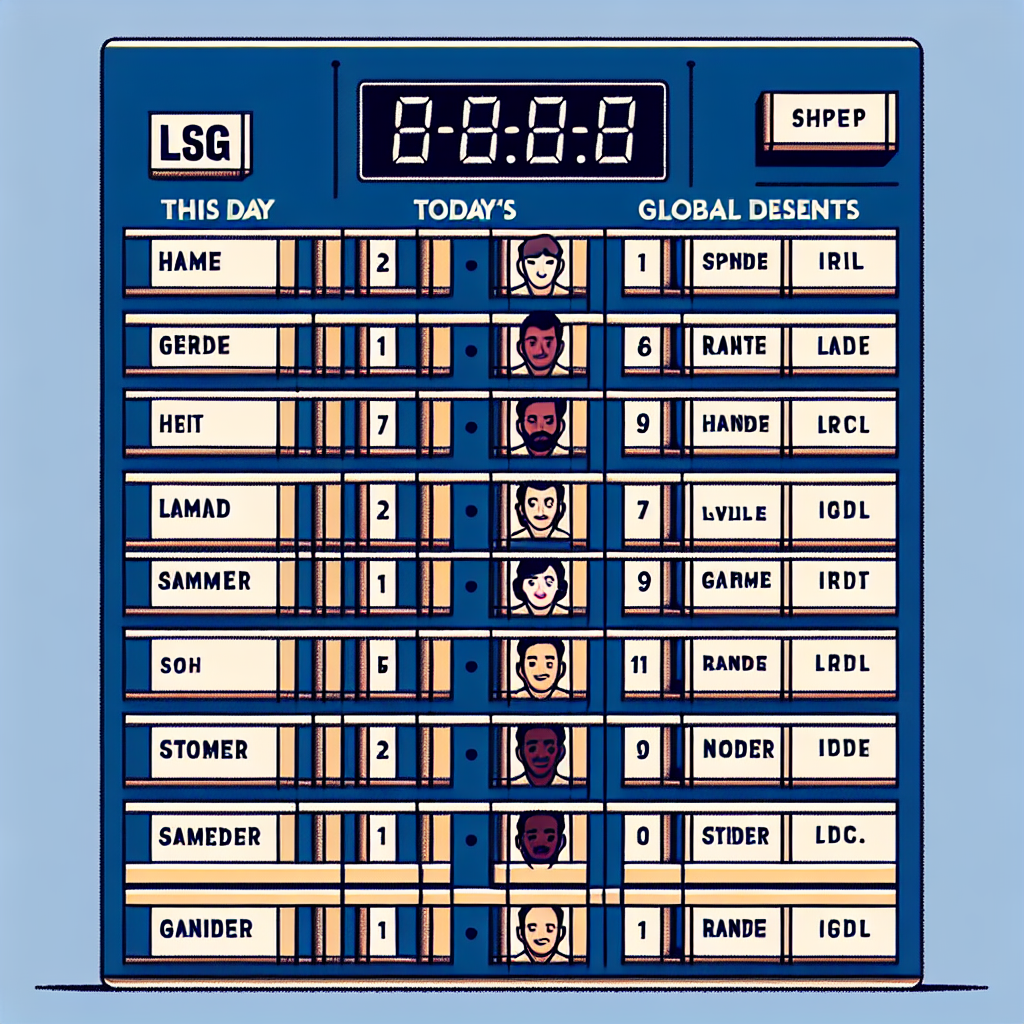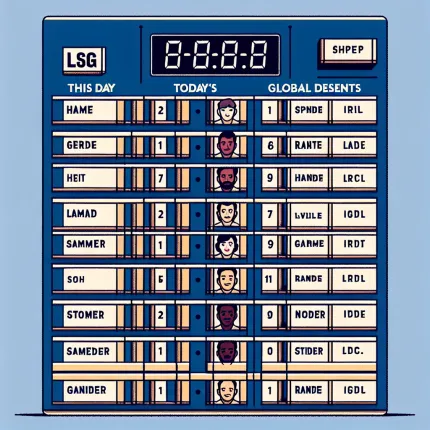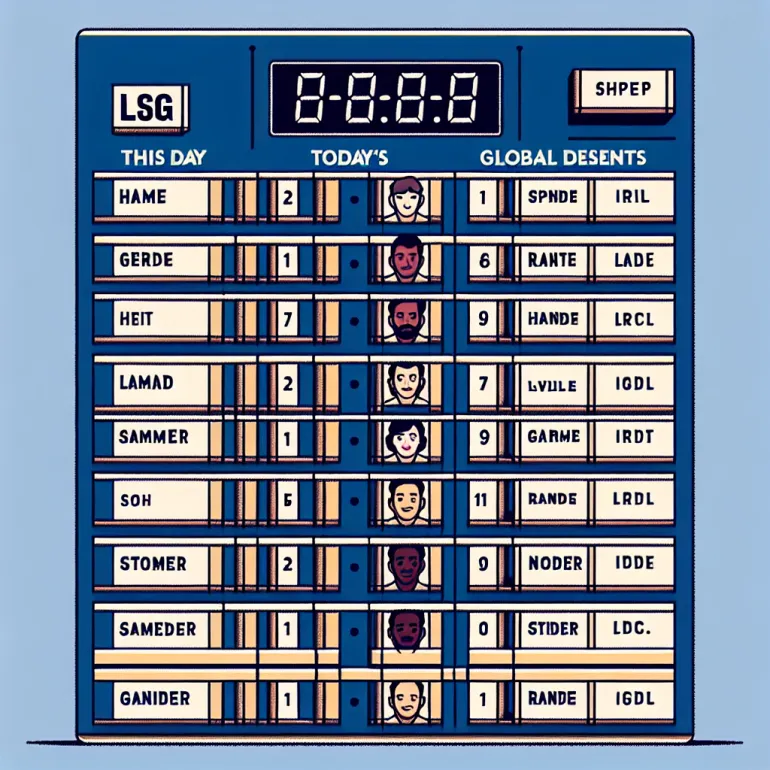
The Lucknow Super Giants (LSG) have emerged as a formidable team in the Indian Premier League (IPL), showcasing a blend of experienced players and young talent. One of the critical aspects of their success is their strategic approach to the batting order. This article delves into the intricacies of the LSG batting order, examining its evolution, key players, and the strategies that have contributed to their performance.
The Evolution of LSG's Batting Order
Since their inception, LSG has focused on building a versatile and dynamic batting lineup. The team management has consistently tweaked the order to adapt to different match situations and opposition strategies. This flexibility has been a cornerstone of their approach, allowing them to maximize their strengths and cover potential weaknesses.
Initial Challenges and Adjustments
In the early stages, LSG faced challenges in finding the right balance between aggression and stability. The team experimented with various combinations, often shuffling players to identify the most effective lineup. This trial-and-error phase was crucial in understanding the strengths and weaknesses of individual players.
- Experimentation with opening pairs to find the right combination.
- Rotating middle-order batsmen to optimize performance.
- Utilizing all-rounders to provide depth and flexibility.
Establishing a Core Batting Lineup
Over time, LSG established a core group of batsmen who consistently delivered strong performances. This core group became the backbone of the team's batting order, providing stability and reliability in crucial matches.
- Identifying key players for top-order stability.
- Developing a middle-order capable of accelerating the innings.
- Ensuring a strong finish with power hitters in the lower order.
Key Players in the LSG Batting Order
The success of LSG's batting order can be attributed to the contributions of several key players. These individuals have not only excelled in their roles but have also adapted to different situations, showcasing their versatility and skill.
Top-Order Anchors
The top order is crucial for setting the foundation of the innings. LSG has relied on experienced players who can anchor the innings while maintaining a healthy strike rate.
- Player A: Known for his consistency and ability to play long innings, Player A has been instrumental in providing solid starts.
- Player B: A dynamic opener who can take on the bowlers from the outset, Player B adds aggression to the top order.
Middle-Order Stabilizers
The middle order plays a pivotal role in stabilizing the innings and setting up a platform for a strong finish. LSG's middle-order batsmen are adept at rotating the strike and building partnerships.
- Player C: A reliable batsman who can anchor the innings and accelerate when needed.
- Player D: Known for his ability to handle pressure situations and play match-winning knocks.
Lower-Order Finishers
The lower order is tasked with finishing the innings on a high note. LSG has invested in power hitters who can clear the boundaries and score quick runs in the death overs.
- Player E: A powerful striker of the ball, Player E is known for his ability to finish games with explosive hitting.
- Player F: An all-rounder who provides depth to the batting lineup and can contribute with both bat and ball.
Strategies Behind LSG's Batting Order
LSG's batting order is not just a list of players; it is a carefully crafted strategy designed to maximize the team's strengths and exploit the opposition's weaknesses. Several key strategies underpin their approach.
Flexibility and Adaptability
One of the hallmarks of LSG's batting order is its flexibility. The team management is not afraid to make changes based on match conditions, opposition analysis, and player form.
- Adapting the order to counter specific bowlers or pitch conditions.
- Promoting in-form players to capitalize on their momentum.
- Using pinch hitters to disrupt the opposition's plans.
Data-Driven Decision Making
LSG leverages data analytics to make informed decisions about their batting order. By analyzing player performance metrics and opposition strategies, they can optimize their lineup for each match.
- Utilizing player performance data to identify strengths and weaknesses.
- Analyzing opposition bowlers to exploit favorable matchups.
- Incorporating statistical insights into strategic planning.
Emphasis on Partnerships
Building strong partnerships is a key focus for LSG. The team emphasizes the importance of communication and understanding between batsmen to build momentum and maintain pressure on the opposition.
- Encouraging batsmen to rotate the strike and build partnerships.
- Fostering a team culture that values collaboration and support.
- Developing strategies to counter opposition plans and maintain partnerships.
Case Studies: Successful Implementations of LSG's Batting Order
To illustrate the effectiveness of LSG's batting order strategies, let's examine a few case studies from recent matches where their approach has yielded significant results.
Case Study 1: A Dominant Opening Partnership
In a high-stakes match against a formidable opponent, LSG's opening pair delivered a stellar performance, setting the tone for a comprehensive victory. The openers capitalized on favorable conditions and executed their roles to perfection.
- Player A and Player B combined for a century partnership, laying a strong foundation.
- Their aggressive approach put pressure on the opposition bowlers, forcing them to alter their plans.
- The partnership provided momentum that carried through the innings, resulting in a commanding total.
Case Study 2: Middle-Order Resilience
In a challenging match where early wickets fell, LSG's middle order showcased resilience and adaptability. The batsmen focused on rebuilding the innings and setting up a competitive total.
- Player C played a crucial anchor role, stabilizing the innings with a well-paced knock.
- Player D provided support with a calculated innings,





